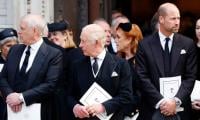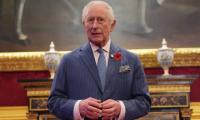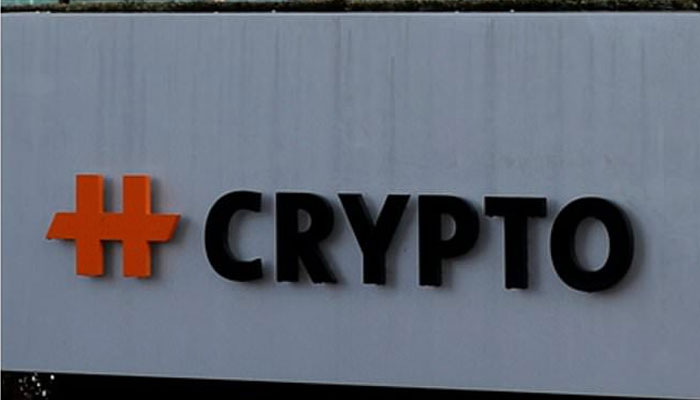The intelligence coup of the century-III
ZURICH: In recent interviews, deceived employees — even ones who came to suspect during their time at Crypto that the company was cooperating with Western intelligence — said the revelations in the documents have deepened a sense of betrayal, of themselves and customers. “You think you do good work and you make something secure,” said Juerg Spoerndli, an electrical engineer who spent 16 years at Crypto. “And then you realize that you cheated these clients.” Those who ran the clandestine program remain unapologetic.
“Do I have any qualms? Zero,” said Bobby Ray Inman, who served as director of the NSA and deputy director of the CIA in the late 1970s and early 1980s. “It was a very valuable source of communications on significantly large parts of the world important to US policymakers.”
This sprawling, sophisticated operation grew out of the US military’s need for a crude but compact encryption device. Boris Hagelin, Crypto’s founder, was an entrepreneur and inventor who was born in Russia but fled to Sweden as the Bolsheviks took power. He fled again to the United States when the Nazis occupied Norway in 1940.
He brought with him an encryption machine that looked like a fortified music box, with a sturdy crank on the side and an assembly of metal gears and pinwheels under a hard metal case.
It wasn’t nearly as elaborate, or secure, as the Enigma machines being used by the Nazis. But Hagelin’s M-209, as it became known, was portable, hand-powered and perfect for troops on the move. Photos show soldiers with the eight-pound boxes — about the size of a thick book — strapped to their knees. Many of Hagelin’s devices have been preserved at a private museum in Eindhoven, the Netherlands.
Sending a secure message with the device was tedious. The user would rotate a dial, letter by letter, and thrust down the crank. The hidden gears would turn and spit out an enciphered message on a strip of paper. A signals officer then had to transmit that scrambled message by Morse code to a recipient who would reverse the sequence.
Security was so weak that it was assumed that nearly any adversary could break the code with enough time. But doing so took hours. And since these were used mainly for tactical messages about troop movements, by the time the Nazis decoded a signal its value had probably perished.
Over the course of the war, about 140,000 M-209s were built at the Smith Corona typewriter factory in Syracuse, NY, under a US Army contract worth $8.6 million to Crypto. After the war, Hagelin returned to Sweden to reopen his factory, bringing with him a personal fortune and a lifelong sense of loyalty to the United States.
Even so, American spies kept a wary eye on his postwar operations. In the early 1950s, he developed a more advanced version of his war-era machine with a new, “irregular” mechanical sequence that briefly stumped American code-breakers secret messages are created using an early encryption machine
Alarmed by the capabilities of the new CX-52 and other devices Crypto envisioned, US officials began to discuss what they called the “Hagelin problem.”
These were “the Dark Ages of American cryptology,” according to the CIA history. The Soviets, Chinese and North Koreans were using code-making systems that were all but impenetrable. US spy agencies worried that the rest of the world would also go dark if countries could buy secure machines from Hagelin.
The Americans had several points of leverage with Hagelin: his ideological affinity for the country, his hope that the United States would remain a major customer and the veiled threat that they could damage his prospects by flooding the market with surplus M-209s from the war.
The United States also had a more crucial asset: William Friedman. Widely regarded as the father of American cryptology, Friedman had known Hagelin since the 1930s. They had forged a lifelong friendship over their shared backgrounds and interests, including their Russian heritage and fascination with the complexities of encryption.
There might never have been an Operation Rubicon if the two men had not shaken hands on the very first secret agreement between Hagelin and U.S. intelligence over dinner at the Cosmos Club in Washington in 1951.
The deal called for Hagelin, who had moved his company to Switzerland, to restrict sales of his most sophisticated models to countries approved by the United States. Nations not on that list would get older, weaker systems. Hagelin would be compensated for his lost sales, as much as $700,000 up front.
It took years for the United States to live up to its end of the deal, as top officials at the CIA and the predecessor to the NSA bickered over the terms and wisdom of the scheme. But Hagelin abided by the agreement from the outset, and over the next two decades, his secret relationship with U.S. intelligence agencies deepened.
In 1960, the CIA and Hagelin entered into a “licensing agreement” that paid him $855,000 to renew his commitment to the handshake deal. The agency paid him $70,000 a year in retainer and started giving his company cash infusions of $10,000 for “marketing” expenses to ensure that Crypto — and not other upstarts in the encryption business — locked down contracts with most of the world’s governments.
It was a classic “denial operation” in the parlance of intelligence, a scheme designed to prevent adversaries from acquiring weapons or technology that would give them an advantage. But it was only the beginning of Crypto’s collaboration with U.S. intelligence. Within a decade, the whole operation belonged to the CIA and BND.
A brave new world
U.S. officials had toyed since the outset with the idea of asking Hagelin whether he would be willing to let U.S. cryptologists doctor his machines. But Friedman overruled them, convinced that Hagelin would see that as a step too far.
To be continued
-
 Mike Tindall Shares Photos With Wife Zara And Prince Harry's Friend
Mike Tindall Shares Photos With Wife Zara And Prince Harry's Friend -
 Iman Honours David Bowie On His 10th Death Anniversary With New Tattoo
Iman Honours David Bowie On His 10th Death Anniversary With New Tattoo -
 Zara Larsson Makes Provocative Political Statement
Zara Larsson Makes Provocative Political Statement -
 Danielle Brooks Recalls Hilarious Daughter Moment
Danielle Brooks Recalls Hilarious Daughter Moment -
 Tom Blyth Explains Rationale Behind Choosing 'lighter' Roles
Tom Blyth Explains Rationale Behind Choosing 'lighter' Roles -
 Prince Harry Wants King Charles To Open His Event
Prince Harry Wants King Charles To Open His Event -
 Buckingham Palace Seeks New King Charles Aide With A Warning About AI Use
Buckingham Palace Seeks New King Charles Aide With A Warning About AI Use -
 Charlie Heaton Shares His Two Cents On Popular 'Stranger Things' Theory
Charlie Heaton Shares His Two Cents On Popular 'Stranger Things' Theory -
 Prince Harry Turns Towards Manipulation For Security: ‘Whoever Is Behind It Realise How Counterproductive You Are’
Prince Harry Turns Towards Manipulation For Security: ‘Whoever Is Behind It Realise How Counterproductive You Are’ -
 ‘Exhausting’ Meghan Markle Becomes Delusional As Alienation Threatens To Grow
‘Exhausting’ Meghan Markle Becomes Delusional As Alienation Threatens To Grow -
 Gracie Abrams Claims To Be 'beyond Ready' For Third Studio Album
Gracie Abrams Claims To Be 'beyond Ready' For Third Studio Album -
 Katy Perry Plans To Capitalize On Her High-profile Relationship With Justin Trudeau
Katy Perry Plans To Capitalize On Her High-profile Relationship With Justin Trudeau -
 Kate Middleton Praised For Keeping Children's Lives Normal
Kate Middleton Praised For Keeping Children's Lives Normal -
 AJ Michalka Reveals How Joe Jonas Breakup Happened
AJ Michalka Reveals How Joe Jonas Breakup Happened -
 Elle Fanning Drops A Hint About Her Role In Upcoming 'Hunger Games' Film
Elle Fanning Drops A Hint About Her Role In Upcoming 'Hunger Games' Film -
 Jenny McCarthy Makes Blunt Statement On Use Of AI: 'Red Flag'
Jenny McCarthy Makes Blunt Statement On Use Of AI: 'Red Flag'




